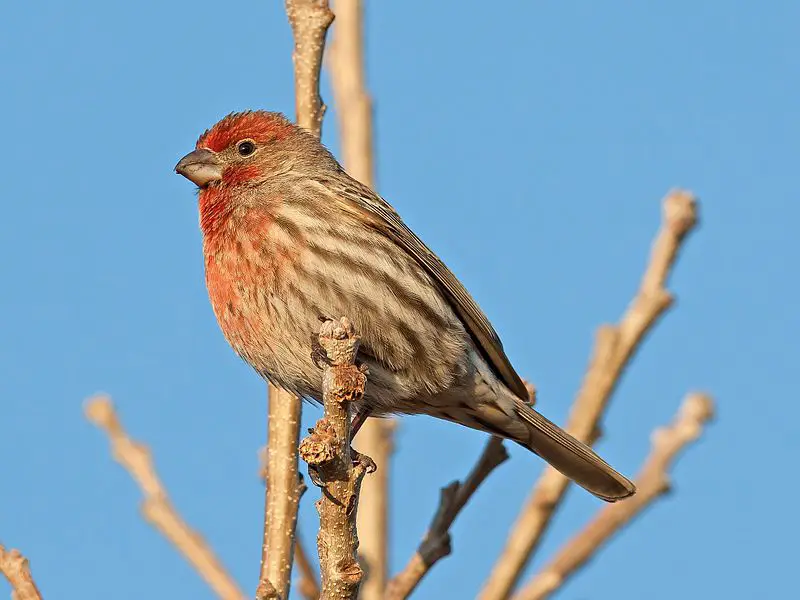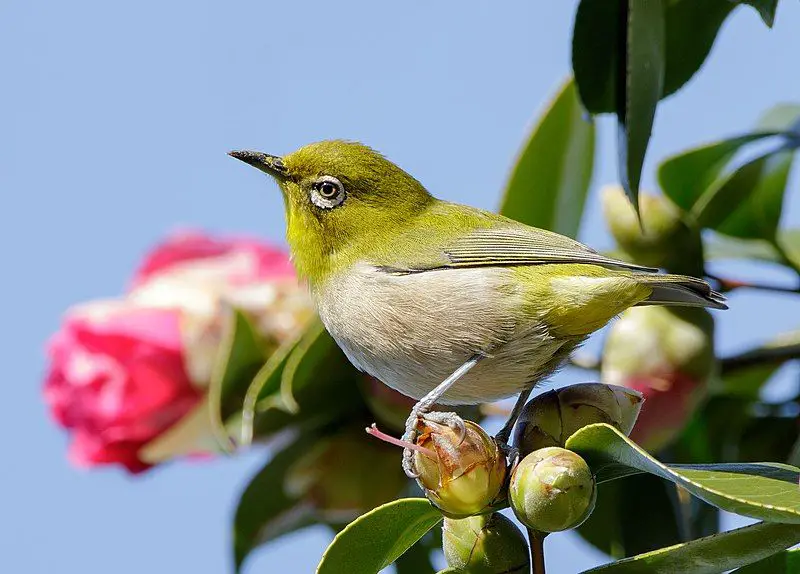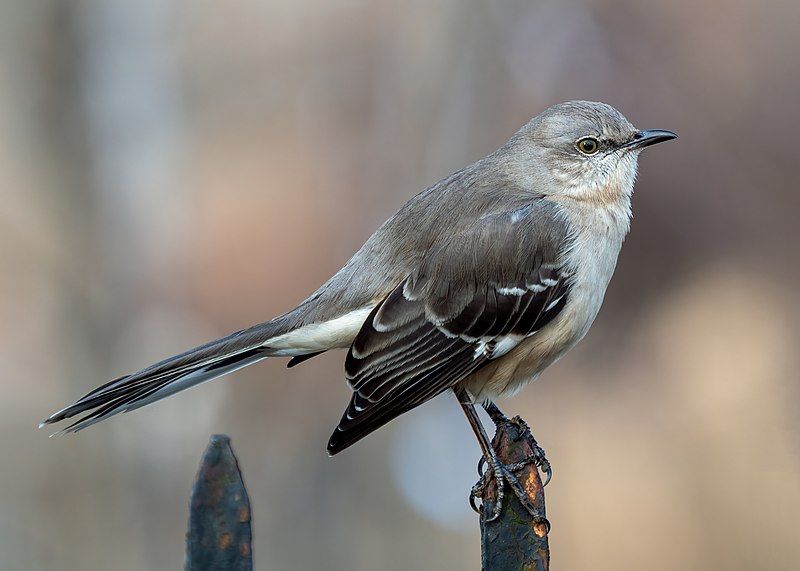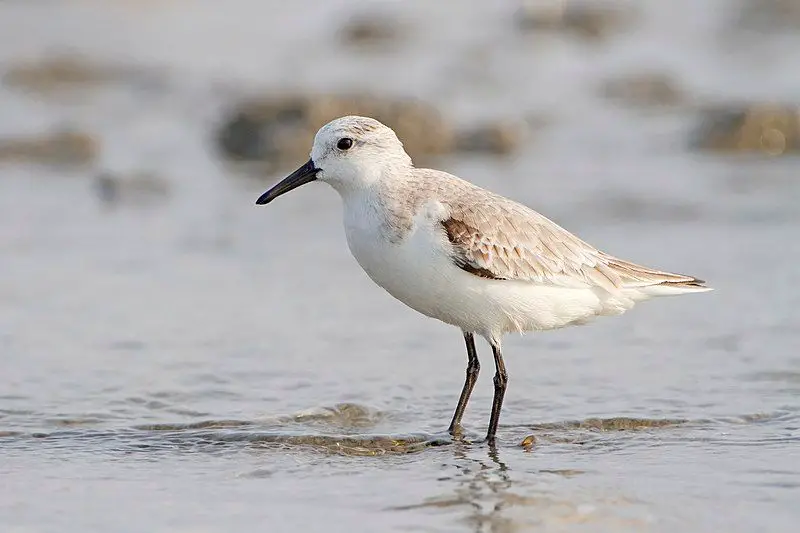Winter in Hawaii brings a unique opportunity to witness a breathtaking display of avian beauty.
While many associate the Aloha State with its warm sandy beaches and lush tropical landscapes, it is easy to overlook the incredible diversity of winter birds that call this paradise home for a few months each year.
These migratory species traverse immense distances to escape the harsh winter conditions elsewhere and seek refuge in the favorable climates of Hawaii.
From stunning seabirds to dazzling waterfowl and thrilling songbirds, Hawaii’s winter bird population enchants seasoned birdwatchers and casual observers alike.
In this article, we will delve into the fascinating world of winter birds in Hawaii, exploring their unique behaviors, habitats, and conservation efforts that ensure their continued presence in this tropical haven.
Prepare to be mesmerized by the colorful plumages, melodious calls, and captivating behaviors of these feathered visitors during the winter months in Hawaii.
13 Winter Birds in Hawaii
Hawaii is a popular destination for tourists who want to enjoy the warm weather, beautiful beaches, and rich culture of the Aloha State. But did you know that Hawaii is also a paradise for bird lovers?
Hawaii hosts various migratory birds worldwide to spend the cold months in this tropical oasis every winter. Some birds are rare, endangered, or endemic, meaning they are found nowhere else on Earth.
Here are 13 winter birds that you can see in Hawaii.
1. Pacific Golden Plover
The Pacific golden plover is a bird that travels long distances during different times of the year. It is a shorebird, meaning it is commonly found near the coast. This bird breeds or reproduces during the summers in two specific regions – Alaska and Siberia.
During the breeding season, the Pacific golden plover can be seen in Alaska and Siberia. It chooses these locations as they provide suitable conditions for nesting and raising their young.
The summers in these regions offer ample food sources and a suitable climate for the plovers to thrive. However, when the breeding season ends, the Pacific golden plover embarks on a remarkable journey.
It goes through a process called migration, which involves traveling long distances to find better resources and suitable habitats.
This plover is known for its extensive migration across the Pacific Ocean. During the non-breeding season, when they are not reproducing, the Pacific golden plover starts its migration.
It covers vast distances, flying across the Pacific Ocean to find other areas for food and shelter.
This bird is considered medium-sized, meaning it is not too small or large. The migration of the Pacific golden plover is not limited to a specific route or destination.
| Kingdom | Animalia |
| Phylum | Chordata |
| Clade | Dinosauria |
| Class | Aves |
| Order | Charadriiformes |
| Family | Charadriidae |
| Genus | Pluvialis |
| Species | P. fulva |
2. House Finch

The house finch is a type of bird that belongs to the finch family called Fringillidae. This bird is originally from western North America.
However, it has also been introduced to other parts of the continent, such as the eastern half and Hawaii. The house finch is not the only bird in its genus.
It is grouped with two other American rosefinches, and all three are placed in the genus Haemorhous. The house finch is known for its beautiful red coloration, especially in males. The males have a reddish hue on their heads, chests, and backs.
Females, on the other hand, have more muted colors with brownish feathers. These birds are relatively small, measuring about 12 to 16 centimeters in length. They have short wings and a slightly notched tail.
Their beaks are conical in shape and designed for cracking open seeds, their primary food source. House finches are highly adaptable and can be found in various habitats, including urban areas, forests, and grasslands.
They are known for their melodic songs, which they use to communicate and attract mates. Breeding season for these.
| Kingdom | Animalia |
| Phylum | Chordata |
| Clade | Dinosauria |
| Class | Aves |
| Order | Passeriformes |
| Family | Fringillidae |
| Genus | Haemorhous |
| Species | H. mexicanus |
3. Warbling White-Eye

The warbling white-eye is a small bird that belongs to the white-eye family. It is also known as the Japanese white-eye and mountain white-eye. This bird is classified as a passerine, which means it has feet adapted for perching.
Sometimes, this bird’s specific epithet (the second part of the scientific name) is written as japonica. However, this is considered incorrect because it does not match the gender of the genus. The genus of the warbling white-eye is Zosterops, and it is a masculine noun.
In scientific terminology, the specific epithet should agree with the gender of the genus. Since the genus Zosterops is masculine, the correct epithet for the warbling white-eye should be japonicus, not japonica.
This is because Latin-based scientific names commonly use the suffix “-us” for masculine nouns. It is essential to use accurate scientific names to ensure proper identification and classification of species.
Correctly matching the gender of the genus and specific epithet helps maintain consistency and clarity in scientific communication.
| Kingdom | Animalia |
| Phylum | Chordata |
| Clade | Dinosauria |
| Class | Aves |
| Order | Passeriformes |
| Family | Zosteropidae |
| Genus | Zosterops |
| Species | Z. japonicus |
4. Northern Cardinal
The northern cardinal is a bird commonly referred to by different names, such as redbird, common cardinal, red cardinal, or simply cardinal.
It belongs to the genus Cardinalis. The cardinal is primarily found in North America, particularly in regions such as the United States, Canada, and Mexico. It is known for its vibrant red plumage, which is more prominent in males than females.
The male cardinal has a distinctive crest on its head, while the female has a reddish tinge on its feathers. These birds are often observed in various habitats, including woodlands, gardens, and urban areas.
They adapt to different environments and thrive in rural and suburban settings.
Cardinals are also known for their beautiful songs, which are melodic and often used for communication and territorial marking. In terms of diet, the cardinal is omnivorous, meaning it eats various foods.
Its diet comprises seeds, fruits, insects, and occasionally small reptiles or amphibians.
They have a strong beak that allows them to crack open seeds and fruits easily. Cardinals engage in courtship rituals during breeding, typically in spring and early summer. The male cardinal displays its vibrant red plum.
| Kingdom | Animalia |
| Phylum | Chordata |
| Clade | Dinosauria |
| Class | Aves |
| Order | Passeriformes |
| Family | Cardinalidae |
| Genus | Cardinalis |
| Species | C. cardinalis |
5. Eurasian Skylark
The Eurasian skylark is a type of bird that belongs to the lark family called Alaudidae. It is a passerine bird, which means it has feet adapted for perching and a specialized vocal apparatus for producing songs. This bird is found in many different places around the world.
It is distributed across Europe and the Palearctic region, which includes parts of Asia and North Africa. The Eurasian skylark has also introduced populations in other areas. One such area is Australia, where the bird has been introduced.
This means that humans intentionally brought the species to Australia, and it has survived and reproduced there. The same is true for New Zealand, where the Eurasian skylark has also been introduced.
In addition to these places, the Eurasian skylark has even made its way to the Hawaiian Islands. It is not native to this area, but humans have also introduced the bird there.
This means there are now populations of Eurasian skylarks living on the Hawaiian Islands, even though they are not naturally found there. Overall, the Eurasian skylark is a widespread species in many parts of the world.
| Kingdom | Animalia |
| Phylum | Chordata |
| Clade | Dinosauria |
| Class | Aves |
| Order | Passeriformes |
| Family | Alaudidae |
| Genus | Alauda |
| Species | A. arvensis |
6. Thrush
The thrushes are a type of bird that belongs to the passerine bird family called Turdidae. This family of birds is found all over the world. In the past, the Turdidae family was even more prominent than it is now.
However, biologists decided to reclassify a group of birds called the Saxicolinae, which includes chats and European robins. They were moved to a different family called Old World flycatchers. This reclassification by biologists led to a change in the size of the thrush family.
The Saxicolinae once considered a part of the thrush family, were now placed in a new family known as Old World flycatchers.
This decision was made based on specific characteristics and similarities these birds share. Chats and European robins, previously considered part of the thrush family, are now classified as Old World flycatchers.
This means that they are no longer included in the Turdidae family. Instead, they have their separate family designation. The term “Old World” refers to Europe, Asia, and Africa, which are the regions where these flycatchers are commonly found.
| Kingdom | Animalia |
| Phylum | Chordata |
| Clade | Dinosauria |
| Class | Aves |
| Order | Passeriformes |
| Family | Turdidae |
7. Spotted Dove
The spotted dove is a pigeon found in the Indian subcontinent and Southeast Asia. It is a small bird with a somewhat long tail. It is known for being a common resident breeding bird in its native range.
This means that it lives in these areas year-round and reproduces there. However, the spotted dove is not restricted to its native range. It has been introduced to many other parts of the world.
This means that people intentionally brought the bird to new locations where it did not exist.
The reasons for introducing the spotted dove to new areas may vary, such as for agricultural purposes or as pets. Once introduced, the spotted dove has been able to adapt and establish feral populations.
Feral populations refer to birds that live and reproduce in the wild without direct human care or control.
This indicates that the spotted dove can survive and thrive in environments outside its native range. The establishment of feral populations highlights the success of the spotted dove as a species.
It shows that it can adapt to new habitats and find the resources it needs to survive. The ability to establish feral populations also means that the spotted dove has the potential to become an invasive species in some areas.
| Kingdom | Animalia |
| Phylum | Chordata |
| Clade | Dinosauria |
| Class | Aves |
| Order | Columbiformes |
| Family | Columbidae |
| Genus | Spilopelia |
| Species | S. chinensis |
8. Northern Mockingbird

The northern mockingbird is a type of bird that is commonly found in North America. It is known for its ability to mimic the songs of other birds and even sounds from its environment.
This bird is typically seen throughout the year in North America, as it is a permanent resident in the region. However, during extreme weather, such as harsh winters, some northern mockingbirds may migrate south in search of more favorable conditions.
This migration is not shared and only occurs when the weather becomes too challenging for these birds to handle. Despite being primarily found in North America, the northern mockingbird has been occasionally observed in Europe.
However, such sightings are rare, and this species is not considered a regular visitor to the European continent. It is interesting to note the adaptability of the northern mockingbird in terms of its ability to survive in different environments.
While it is mainly found in North America, it can move to more suitable locations during adversity. The northern mockingbird’s ability to mimic sounds is a unique characteristic that sets it apart from other bird species.
This skill allows it to imitate the songs of various birds and sounds like car alarms, sirens, or even human speech.
| Kingdom | Animalia |
| Phylum | Chordata |
| Clade | Dinosauria |
| Class | Aves |
| Order | Passeriformes |
| Family | Mimidae |
| Genus | Mimus |
| Species | M. polyglottos |
9. Lesser Scaup
The lesser scaup is a type of duck found in North America. It is known for its ability to dive underwater. During the winter, these ducks migrate to warmer areas in Central America.
This migration allows them to escape the harsh weather conditions of the colder months. One exciting feature of the lesser scaup is its blue bill.
This distinctive characteristic has led to its colloquial names, such as “little bluebill” or “broadbill.” The blue color of their bills helps differentiate them from other duck species. These ducks are relatively small in size compared to other diving ducks.
They have a compact body and short necks. This physical structure enables them to swim and dive effortlessly for food underwater. In their search for food, lesser scaups primarily feed on aquatic plants, insects, and small crustaceans.
Their diving ability allows them to explore the depths of lakes and ponds, where they can find abundant food sources. During the breeding season, male lesser scaups develop a striking appearance.
They have a glossy black head and neck, contrasting their white sides and back. This distinctive coloration helps attract females for mating. Females, on the other hand, have a more subtle appearance.
| Kingdom | Animalia |
| Phylum | Chordata |
| Clade | Dinosauria |
| Class | Aves |
| Order | Anseriformes |
| Family | Anatidae |
| Genus | Aythya |
| Species | A. affinis |
10. Japanese Bush Warbler
The Japanese bush warbler is a bird that is commonly found in Asia. Its Japanese name is also known as uguisu.
This bird is often heard rather than seen, meaning its beautiful songs are more noticeable than its physical appearance. The Japanese bush warbler produces a distinctive and melodious song during the breeding season.
This song is quite famous and can be heard in various parts of Japan, particularly during the beginning of spring.
During this time, the bird’s song resonates throughout much of the country, filling the air with its enchanting melody. The unique breeding song of the Japanese bush warbler is what makes it unique.
It is a sound that captures the essence of nature and signifies the arrival of spring.
When people hear this song, they know that warmer days are approaching and the world is transforming. Despite its prevalence, humans do not often see the Japanese bush warbler.
It tends to remain hidden among the dense vegetation, making it challenging to spot.
However, the bird’s song constantly reminds us of its presence and adds a touch of magic to the natural surroundings. The Japanese bush warbler’s song is a delight to the ears and serves a purpose.
| Kingdom | Animalia |
| Phylum | Chordata |
| Clade | Dinosauria |
| Class | Aves |
| Order | Passeriformes |
| Family | Cettiidae |
| Genus | Horornis |
| Species | H. diphone |
11. Cardinalidae
Cardinalidae is a family of birds found only in the New World. This means that they are native to the Americas and are not found anywhere else in the world. The family comprises different species, including cardinals, grosbeaks, and buntings.
These birds are all part of the same family because they share similar characteristics and traits. Cardinals are perhaps the most well-known members of the Cardinalidae family. They are known for their vibrant red plumage, which is more prominent in males than females.
Cardinals often feed on seeds and insects in backyards and gardens. They have a distinct crest on their heads, which adds to their unique appearance. Grosbeaks are another type of bird that belongs to the Cardinalidae family.
They are named after their large, thick beaks, adapted for cracking open seeds and nuts. Grosbeaks come in various colors, including red, black, and yellow.
They are known for their beautiful songs and can be found in forests and woodlands across the Americas. Buntings are also part of the Cardinalidae family. They are small to medium-sized birds that are known for their colorful plumage.
| Kingdom | Animalia |
| Phylum | Chordata |
| Clade | Dinosauria |
| Class | Aves |
| Order | Passeriformes |
| Family | Cardinalidae |
12. California Quail
The California quail is a type of bird that lives on the ground. It is also sometimes called the California Valley quail or Valley quail. These birds belong to the New World quail family. One exciting feature of the California quail is its crest or plume.
This is a curved bunch of feathers on top of its head. The crest is made up of six feathers. In male quails, the crest is black. However, in female quails, the crest is brown. Another distinctive characteristic of the California quail is its appearance.
The birds have brown flanks, which are the sides of their bodies. On these flanks, there are white streaks.
These streaks create a pattern on the bird’s feathers, making it look unique. The California quail is a ground-dwelling bird, which means it spends most of its time on the ground rather than flying.
This bird is usually found in the western parts of the United States, particularly in California. It prefers habitats such as grasslands, foothills, and agricultural areas. These quails are social birds and often live in groups called coveys.
| Kingdom | Animalia |
| Phylum | Chordata |
| Clade | Dinosauria |
| Class | Aves |
| Order | Galliformes |
| Family | Odontophoridae |
| Genus | Callipepla |
| Species | C. californica |
13. Sanderling

The sanderling is a type of bird that is known for being small and wading in water. It comes from the Old English word “sand-yrðling,” which means “sand-ploughman.” This name reflects its behavior of foraging or searching for food in the sand.
The name of the sanderling’s genus comes from the Ancient Greek words “kalidris” or “skalidris.” These terms were used by Aristotle, a famous philosopher and scientist, to describe certain birds that had a grey color and were often found near bodies of water.
In addition to the genus name, the sanderling has a specific name. This particular name is “alba,” which comes from the Latin word for “white.” This name is fitting because the sanderling has predominantly white feathers, especially during the breeding season.
To summarize, the sanderling is a small wading bird known for its sand-ploughing behavior. Its name is rooted in old English and Ancient Greek, reflecting its characteristics and appearance. The specific name “alba” further emphasizes its white plumage.
| Kingdom | Animalia |
| Phylum | Chordata |
| Clade | Dinosauria |
| Class | Aves |
| Order | Charadriiformes |
| Family | Scolopacidae |
| Genus | Calidris |
| Species | C. alba |
Conclusion
While winter is often associated with decreased bird activity in many parts of the world, Hawaii offers a unique exception with its diverse population of winter birds.
These avian visitors bring vibrant colors and joyful songs to the islands during the cooler months, adding to spectacular natural beauty.
From migratory birds seeking respite from the harsher climates of North America and Siberia to the native species that thrive year-round, the presence of winter birds in Hawaii offers a reminder of the interconnectedness of the global bird community.
As conservation efforts continue to protect their habitats and promote sustainable practices, the winter birds of Hawaii can continue to enchant both locals and visitors alike for generations to come.
So, whether you are an avid birdwatcher or simply an admirer of nature, be sure to take the time to appreciate the delightful sights and sounds of the winter birds in Hawaii.